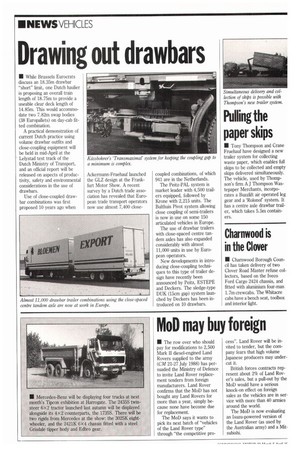Drawing out drawbars
Page 16

If you've noticed an error in this article please click here to report it so we can fix it.
• While Brussels Eurocrats discuss an 18.35m drawbar "short" limit, one Dutch haulier is proposing an overall train length of 18.75m to provide a useable clear deck length of 14.85m. This would accommodate two 7.82m swap bodies (38 Europallets) on day-cab fitted combination.
A practical demonstration of current Dutch practice using volume drawbar outfits and close-coupling equipment will be held in mid-April at the Lelystad test track of the Dutch Ministry of Transport, and an official report will be released on aspects of productivity, safety and environmental considerations in the use of drawbars.
Use of close-coupled drawbar combinations was first proposed 10 years ago when Ackermann-Fruehauf launched the GLZ design at the Frankfurt Motor Show. A recent survey by a Dutch trade association has revealed that European trade transport operators now use almost 7,400 close coupled combinations, of which 941 are in the Netherlands.
The Peitz-PAL system is market leader with 4,500 trailers equipped, followed by Krone with 2,215 units. The Bulthuis Pivot system allowing close coupling of semi-trailers is now in use on some 150 articulated vehicles in Europe.
The use of drawbar trailers with close-spaced centre tandem axles has also expanded considerably with almost 11,000 units in use by European operators.
New developments in introducing close-coupling techniques to this type of trailer design have recently been announced by Peitz, ESTEPE and Deckers. The sledge-type DUK (15cm gap) system bunched by Deckers has been introduced on 10 drawbars.








































































































































